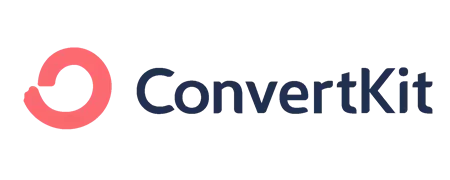As a coach, you probably love diving into the details—training plans, data analysis, athlete development strategies. It’s second nature to you, but remember, each of your athletes has a different perspective and level of expertise and desire to dive into the details. That’s okay. They don’t all need the same level of understanding and detail! Your role isn’t just about creating the perfect plan; it’s about making sure each athlete understands how to use it, why it matters, and what’s expected of them, based on their individual skills, knowledge, and perspective.
Clear communication bridges the gap between your expertise and your athletes’ goals.
The harder you are to understand, the less impact you’ll have on their results.
If you prefer audio, you can listen to the audio version on the podcast, or use the embedded video and audio players below. Or watch the video on Youtube
The best coaches think clearly, document clearly, and communicate clearly. Each of these builds on the other, ensuring that your coaching not only makes sense to you but resonates with your athletes too.
Let’s break it down.
Think Clearly: Simplify the Complex
Clear communication starts before you say a word. It begins with how you think about and structure your coaching process.
You likely have a wealth of knowledge about physiology, data analysis, and training methodologies. That’s cool, but it’s easy to overwhelm an athlete with too much information or a plan that’s overly intricate. The best coaches distill their expertise into actionable insights.
Ask yourself:
- What does my athlete really need to know? Focus on the essentials that help them execute the plan effectively.
- What’s their level of understanding? Gauge their experience and willingness to dive into technical details.
- Am I overcomplicating things? Simpler doesn’t mean less effective—it often means more effective.
When you think clearly, you’re already halfway to being understood.
Document Clearly: Build a Roadmap for Success
Your athletes need more than verbal instructions. They need a written (or visual) guide they can refer to when they’re training, especially when questions arise, and you’re not immediately available.
Good documentation provides clarity and confidence. A confusing or cluttered plan does the opposite—it leaves your athletes guessing and frustrated.
Here’s how to document clearly:
- Use simple, direct language. Replace technical jargon with terms your athlete uses and understands.
- Break it into steps. A wall of text is intimidating. Use bullet points, numbered lists, or short paragraphs to make your plans digestible.
- Anticipate questions. Add brief explanations where needed, like “Why are we doing this interval set?” or “What should this effort feel like?”
- Be consistent. Use the same terms and structure throughout your plans. Consistency helps athletes feel grounded.
- Keep centralized resources that you can link to from your Training Plans.
By documenting clearly, you create a roadmap that keeps your athletes on track—even if you’re not there to guide them in the moment.
Communicate Clearly: Meet Your Athletes Where They Are
Even with a good plan, effective coaching requires strong, ongoing communication. Like your training plans, your communication should be tailored to the athlete’s needs.
- Know your client. Some athletes love digging into the numbers and analysis, while others just want to know what to do next. Adapt your communication to match their individual preferences.
- Ask for feedback. Regularly check in to see if your instructions make sense. If they’re confused, don’t take it personally or get annoyed—use it as an opportunity to refine your approach.
- Be concise. Avoid rambling or overloading your athletes with too much information at once. Share what’s relevant and actionable. Start with less, and add more if needed.
- Be supportive. Clear communication isn’t just about instructions. It’s about motivation, encouragement, and making sure your athletes feel heard and understood. The best coaches combine clear guidance with a motivating and encouraging approach, ensuring each athlete gets exactly what they need to succeed..
Why It All Matters
When you think clearly, document clearly, and communicate clearly, you build trust with your athletes. They’ll feel confident in your guidance, which leads to better adherence, less confusion, and stronger results.
Coaching isn’t just about having the knowledge. It’s about translating that knowledge into something your athletes can understand, believe and apply. The best coaches don’t just lead—they make sure their athletes know how to follow.
How Can Training Tilt Help?
Training Tilt's content, templating, and communication features are designed to help you implement these best practices effectively:
- Content Management: Easily create and organize content that supports your athletes, whether it's training plans, educational articles, or video guides and link them into your training plans. This makes sure your athletes always have access to the information they need.
- Templates: Use templating features to streamline documentation. Develop consistent workouts in your library for workouts and training plans that ensure your athletes get clear, concise instructions every time.
- Communication Tools: Engage with your athletes through integrated messaging tools, which help you adapt your communication style to each athlete's needs. Whether it's sharing progress, providing encouragement, or giving feedback, Training Tilt has the tools to keep communication clear and effective. We event have a new AI tool to help you keep your workout comments consistent and well structured.
Take our Free "Authentic" Marketing Course for Coaches
Designed for endurance sport coaches. Marketing doesn't need to be pushy. The best marketing simply creates a win-win relationship between you and your customers. Take the simple 6 part course to learn more.













